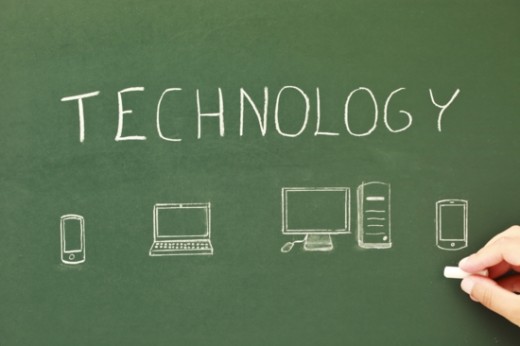Technology in the Classroom, ISTE Standards

Why technology?
I realize this is a bit different from what I usually write so I beg your indulgence; I’m currently in college and this week we had a discussion in one of my classes I wanted to explore a little more.
This week in one of my classes we talked about having more technology in the classroom and what, if any, standards should be put on the student and teacher to allow them to use the tools. Should students just be allowed to use technology with little no no guidance; are teachers immune from having standards on themselves? What I found to be interesting among my classmates is that we all seemed to agree that technology in the classroom seemed like a good idea but very few of us could agree on the “terms” or allowed usage by students and teachers.
Some, myself included, felt that technology was a good idea but not to be in the students hands 24/7 all day during class and others felt that it was up to the teacher to allow them to use it all the time but with direction and interaction. I must question this though, if students are only working with technology and having the rare interaction with the teacher is that really doing them any good?
Mostly students are in school to learn their required lessons for future use; Math, Reading and Writing, but I think part of the experience of learning is also learning how to interact with others and learn communication for future use. School is meant to prepare us for the adult world of working and paying taxes, in order to have the best experience possible shouldn’t there be a balance of technology and social interaction?
If students are only having interactions with technology to learn with really what would be the point of having schools? Standards that are a guide for teachers to implement and hold themselves to will benefit students in the long run.
ISTE Standards
I found during these classroom discussions that I wasn’t the only one to the technology with standards was a good idea; a group of teachers felt the same and had created a standardized guide to help others measure their own teaching when using technology.
The ISTE Standards are a way for teachers to design and implement learning experiences to make the best out of the students learning experiences. What I appreciate about these standards though is that they don’t create standards that are hard and unattainable for anyone to use.
For example, the number one standard is “Facilitate and inspire student learning and creativity. Teachers use their knowledge of subject matter, teaching and learning, and technology to facilitate experiences that advance student learning, creativity, and innovation in both face-to-face and virtual environments.”
Teachers of all teaching levels and experiences can benefit from standards written in a way to help facilitate learning in a beneficial way for students that gives them guidelines but gives them the freedom to decide how to apply them. Having standards that teachers can follow keeps them at the top of their teaching game which means the biggest benefit to students.

Technology is advancing...
If you like that technology is advancing or not doesn’t matter, the point is that it is and our children are going to be the ones using it in the future.
I realize I’m about to age myself here but if you were a child of the 90’s you’ll understand this. When I was in school there was, time built into our scheduled for us to go use the computer lab to play the most popular educational game of that time called The Oregon Trail. For those of you who have never played it, you missed out on a great time, it was a game that was not only educational but was fun and kept our interest as well. As an adult, I now realize that I wasn’t only having fun with the game but this time was also setting me up to be familiar with and know how to use computers.
Technological tools in the classroom are going to start happening more frequently, if the teacher gets grants, gets subsidized or the equipment is owned by the school and gets put into a lab for use at least once a day. Having standards for teachers that focuses on what they CAN, not have to do, is not only good for them but it’s also good for the students who will benefit from the teachers knowledge.
How do you feel..??
Do you think technology is a good idea in the classroom?
© 2017 Chosen Shades








